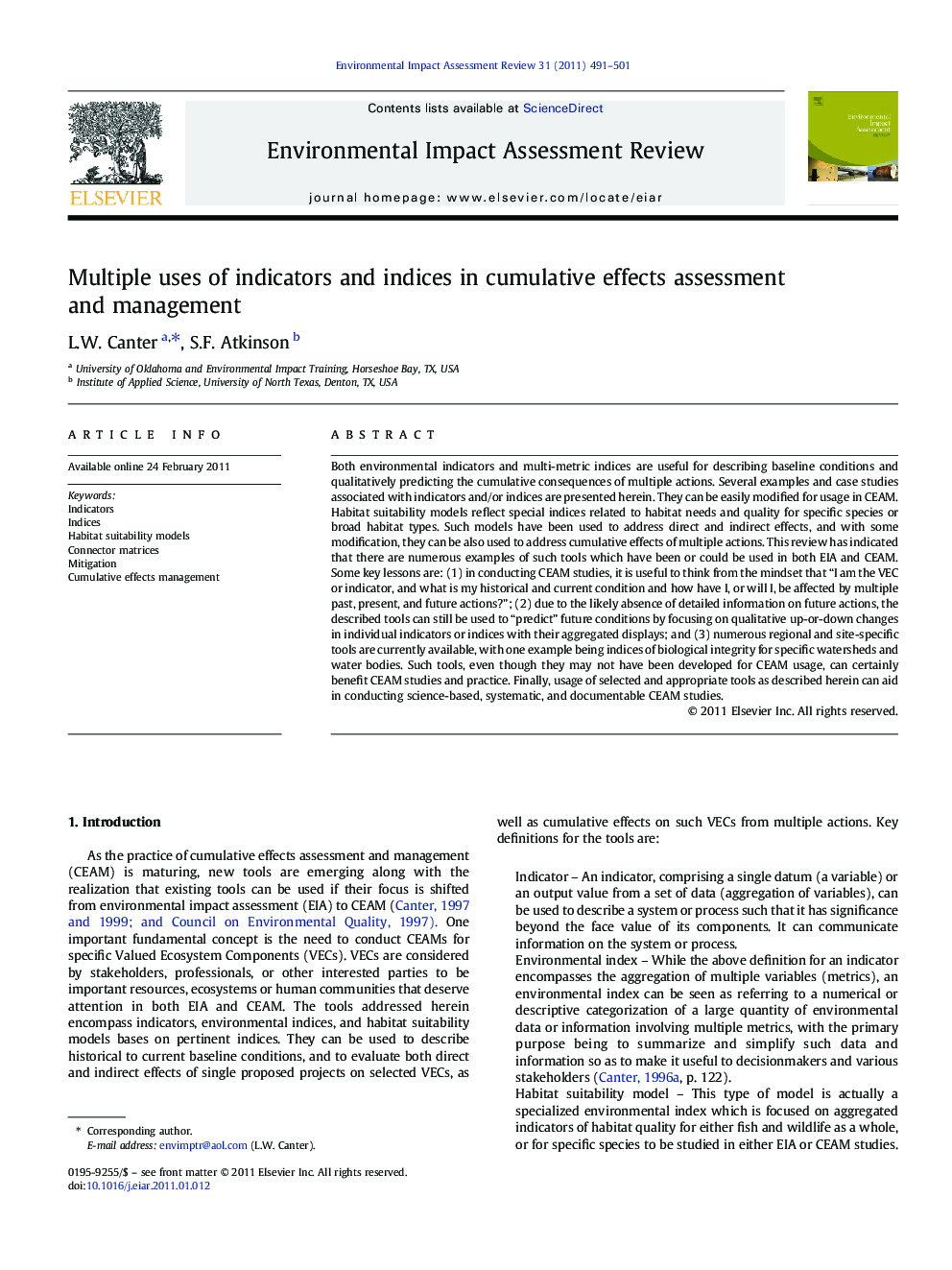| Article ID | Journal | Published Year | Pages | File Type |
|---|---|---|---|---|
| 1052926 | Environmental Impact Assessment Review | 2011 | 11 Pages |
Both environmental indicators and multi-metric indices are useful for describing baseline conditions and qualitatively predicting the cumulative consequences of multiple actions. Several examples and case studies associated with indicators and/or indices are presented herein. They can be easily modified for usage in CEAM. Habitat suitability models reflect special indices related to habitat needs and quality for specific species or broad habitat types. Such models have been used to address direct and indirect effects, and with some modification, they can be also used to address cumulative effects of multiple actions. This review has indicated that there are numerous examples of such tools which have been or could be used in both EIA and CEAM. Some key lessons are: (1) in conducting CEAM studies, it is useful to think from the mindset that “I am the VEC or indicator, and what is my historical and current condition and how have I, or will I, be affected by multiple past, present, and future actions?”; (2) due to the likely absence of detailed information on future actions, the described tools can still be used to “predict” future conditions by focusing on qualitative up-or-down changes in individual indicators or indices with their aggregated displays; and (3) numerous regional and site-specific tools are currently available, with one example being indices of biological integrity for specific watersheds and water bodies. Such tools, even though they may not have been developed for CEAM usage, can certainly benefit CEAM studies and practice. Finally, usage of selected and appropriate tools as described herein can aid in conducting science-based, systematic, and documentable CEAM studies.
